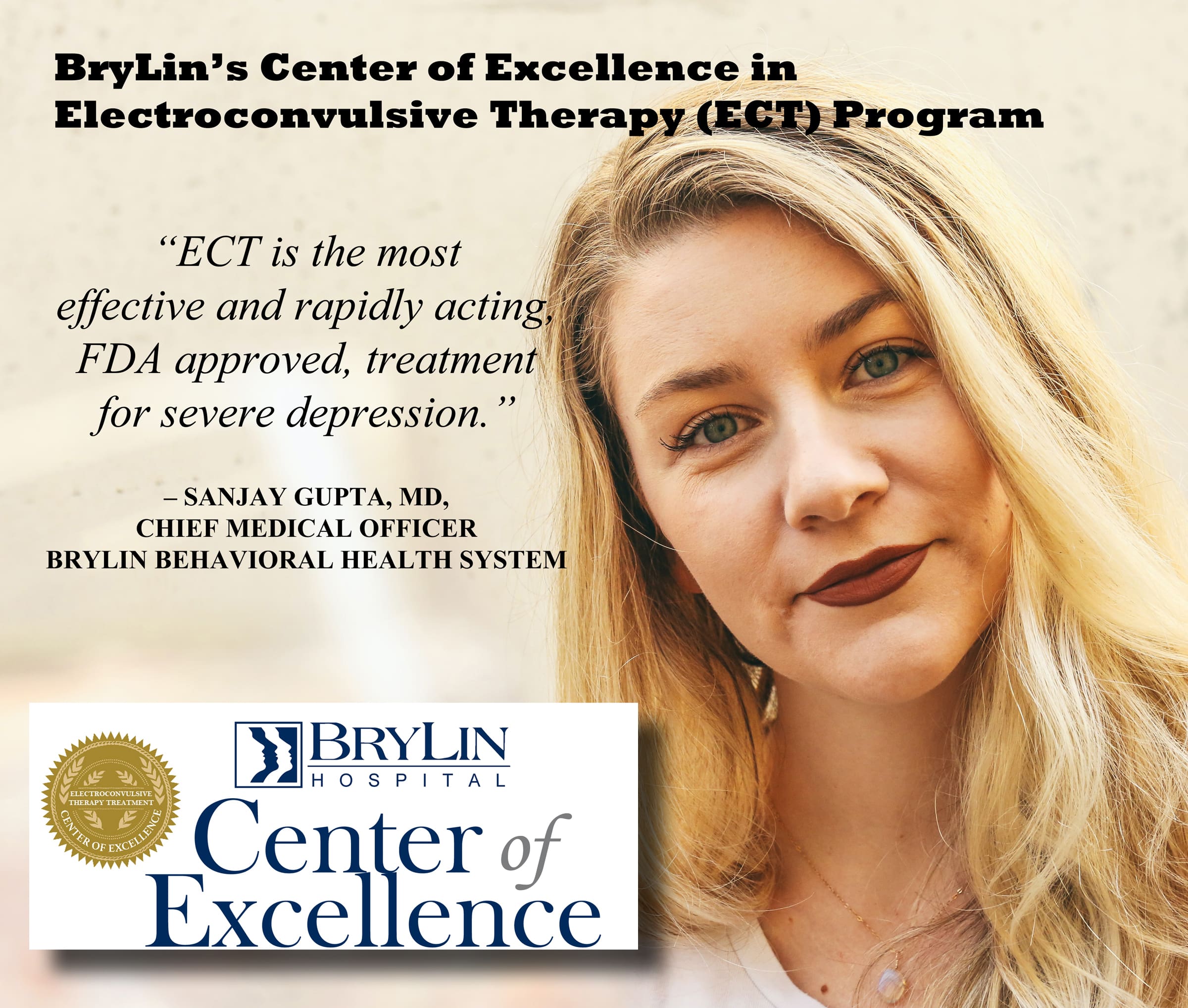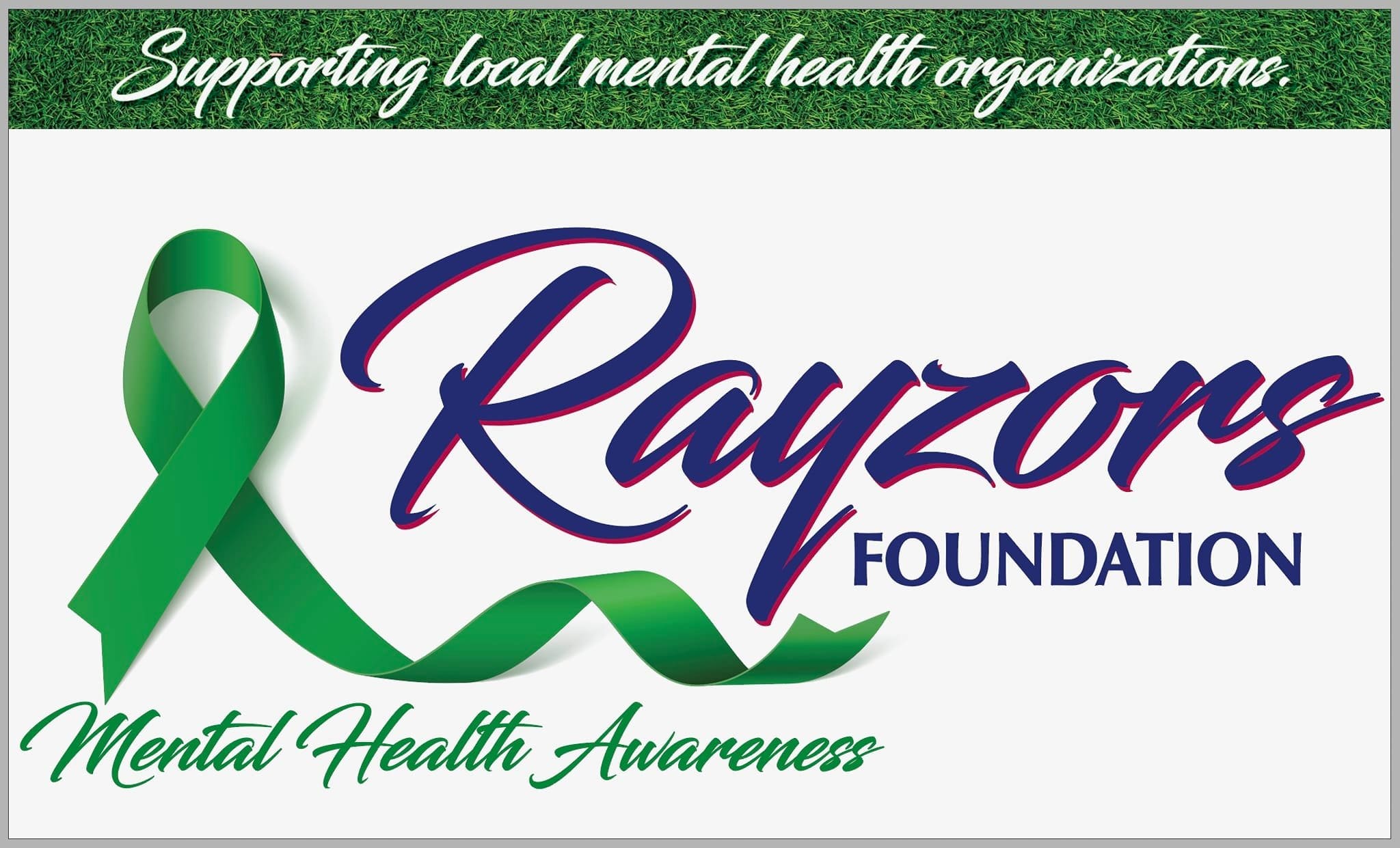 Electroconvulsive Therapy (ECT)
Electroconvulsive Therapy (ECT)
What you need to know about Electroconvulsive Therapy
The validity of Electroconvulsive Therapy (ECT) as a therapeutic, and often lifesaving, intervention has been marred by misconceptions. Much of the stigma is based on depictions from movies (One Flew Over the Cuckoo’s Nest & The Snake Pit), where early treatments were performed without anesthesia or muscle relaxants. Modern ECT bears no resemblance to the dramatization depicted in movies. It’s performed in a controlled setting, under anesthesia, to achieve the most therapeutic benefit with the fewest possible risks.
Electroconvulsive Therapy is endorsed by the American Psychiatric Association and approximately 100,000 patients annually receive ECT in the US. Recently, ECT has gained some national attention as a more accepted form of treatment for those with severe depression, mania or other psychiatric disorders. In 2011, actress/author Carrie Fisher went on the Oprah Winfrey Show to discuss how she has struggled with her own severe depression, since her 20’s. At that time, Carrie Fisher said she was receiving ECT every six weeks to help successfully manage her manic depression. According to Fisher, ECT gets an unfair rap from Hollywood. “They would portray it like it’s a punishment, like if you were bad in the mental hospital. If you’ve been naughty, you’re going to get ECT”, Fisher says. “[But] it’s done me a lot of good, a world of good.”
In 2012, Dr. Oz dedicated a whole show to ECT and it’s effectiveness, entitled “The Shock That Could Save Your Life”. During this show, they discussed how electroconvulsive therapy is more common than one might think. Experts were heralding ECT as incredibly effective for treating depression when nothing else, including anti-depressants.
ECT may be a good treatment option to be considered when medications aren’t tolerated or other forms of therapy haven’t worked. However, it is far more valuable than to be considered just an intervention of last resort (for example, ECT can be a beneficial alternative for women who don’t want to expose their infants to antidepressants while breastfeeding). It is the most effective and rapidly acting treatment that we have today. Remission, which is the likelihood of having complete resolution of symptoms, is reported to range from 70-90% with ECT (much more effective than any medication we have at present, which typically have remission rates around 20-30%). *
*(Sarah Hollingsworth Lisanby, MD, Professor and Chair, Department of Psychiatry and Behavioral Sciences, Director, Brain Stimulation and Neurophysiology Center, Duke University School of Medicine)
ECT’s effectiveness in treating severe mental illnesses is recognized by the American Psychiatric Association, the American Medical Association, the National Institute of Mental Health, and similar organizations in Canada, Great Britain and many other countries.
(Learn More About Our Newly Designated Center of Excellence ECT Treatment Program Here)
Ketamine vs ECT
In the first head to head study comparing Ketamine and Electroconvulsive Therapy (ECT) in the treatment of severe depression, researchers at Lund University in Sweden found Electroconvulsive therapy (ECT) to be superior to ketamine infusions, both in terms of higher remission rates and with a greater reduction of depressive symptoms.
A total of 63 percent of the patients in the ECT group recovered after treatment, compared with only 46 percent among those who received racemic ketamine intravenously. The study also found that older patients (51 – 85yoa) seem to respond better to ECT than ketamine, whereas younger patients seem to respond similarly to both ketamine and ECT. The conclusion of this study found that, given the high remission rate, in particular for patients who are older or present with psychotic symptoms, the superior efficacy of ECT must not be ignored (see results of the study here).
Another comparison between the two is often the cost. Ketamine infusions are not an FDA-approved depression treatment and, as a result, they are unlikely to be covered by insurance. Overall cost can also vary with initial treatments consisting of one or two infusions a week for approximately three weeks. With follow-up infusions every few weeks there-after, Ketamine infusions can be an expensive treatment option for depression. Conversely, because ECT is an FDA approved treatment for major depression, most insurances will cover the cost making it a much more affordable option.
⇒WATCH THIS SHORT VIDEO: Electroconvulsive Therapy (ECT): Treating Severe Depression⇐
Electroconvulsive therapy (ECT) remains the most effective treatment for severe depression and Treatment Restive Depression (TRD). This video provides an introduction to ECT for patients, family members and clinicians that may be considering this treatment option.
ECT has been used for decades. The American Psychiatric Association concluded in 1978 that ECT was both safe and effective for cases of severe depression and several other severe mental illnesses. More recently, a blue ribbon panel convened in 1985 by the U.S. Governments National Institutes of Mental Health found that ECT was demonstrably effective for a narrow range of severe psychiatric disorders, including depression, mania and schizophrenia.
Medication helps many people suffering from the aforementioned psychiatric disorders but, for over 100,000 U.S. patients each year, ECT is the most effective treatment. Some patients do not respond to medications, others cannot tolerate the side effects, and still others – those whose illness has made them seriously suicidal, for example – urgently require the reliable symptom relief that ECT can provide.

How is ECT Given?
ECT is given by a treatment team of doctors, nurses, and nursing assistants, often with an anesthesia specialist. ECT is usually given two or three times a week, typically Monday, Wednesday and Friday mornings, for a total of 6-12 treatments. A few patients may require more than 12 treatment for maximum benefit.
Is ECT Curative?
ECT is an exceptionally effective medical treatment, helping 90% of the patients who use it. Most patients remain well for many months afterwards. The tendency to relapse after a favorable treatment outcome can often be countered by medication taken for about half a year after ECT. Permanent cures for psychiatric illnesses are rare, however, regardless of the treatment given.
How Safe Is ECT?
ECT is a very safe medical treatment. A recent study in California found about one death per 50,000 ECT treatments, a risk far below the risk of child birth. Another study observed the death from heart attacks and suicide were less frequent among depressed patients who received ECT than among those who had not. With modern anesthesia, fractures and oxygen deprivation virtually never occur, and many patients with high blood pressure or heart conditions can safely be treated. Most patients surveyed after ECT said it was no worse than going to the dentist, and many found ECT less stressful.
Although it is necessary for the brain cells to interact with each other chemically and electrically for ECT to work, exactly how this integration is therapeutic needs further investigation. We believe that patients with melancholia have a severe biochemical disorder of the nervous system that ECT corrects. A number of rigorously designed research projects are under way to study this question.
On awakening from ECT, it is customary for patients to experience some confusion, which generally clears within an hour. Memory for recent events, addresses, and telephone numbers may not be as good. In most patients, the memory disturbances goes away within a few days or weeks, but it can continue in a mild form for a period of months. Many patients will find that their memories are somewhat hazy for the time they were ill; the same period is frequently experienced by depressed patients who do not receive ECT. Memory disturbances are not needed for ECT to work and doctors use special techniques (such as brief pulse ECT) to minimize or avoid any side effects on memory.
Does ECT Cause Permanent Memory Loss?
Not in most people. Most importantly, ECT does not interfere with the ability to learn, and many studies have shown better learning after ECT than before it, probably because of improved concentration from relief of depression. A few patients, however, still have not regained some specific personal memories when tested six months after receiving a form of treatment called bilateral ECT. Generally, these memories are for events in the months immediately preceding. No long term or persistent effects of ECT on intellectual abilities or memory problems in patients with psychiatric illness result more often from medication and incompletely treated illness.
Why Does ECT’s Public Image Suffer?
Just as with other medical treatments, ECT was used excessively in the past, mostly in large understaffed mental hospitals in the 1940’s. The drama of mental illness has also been exploited by fictional movies such as “The Snake Pit” that indicates stark and more exaggerated portrayals of ECT to emphasize a story.
*This information is intended to provide the facts about ECT in order to further the understanding of its value.
For more information, please call the ECT Department at 716-886-8200 ext 2196.

Are You Struggling with Mental Illness/Your Mental Health?
If you’re struggling with depression, anxiety, bipolar disorder, PTSD, or other mental illness…. You’re not alone. Many people have feelings or experiences like yours at some point in their lives. When such experiences become severe, some people need to reach out for help and treatment. Call BryLin to speak with a licensed professional at (716) 886-8200 or Contact Us Today!
*Source NAMI
# # #
BryLin Hospital
⇒ Home
⇒ Inpatient Crisis Mental Health Care for Children and Adolescents
⇒ Inpatient Crisis Mental Health Care for Adults
⇒ Electroconvulsive Therapy Program for Adults
With HELP, There’s HOPE℠




